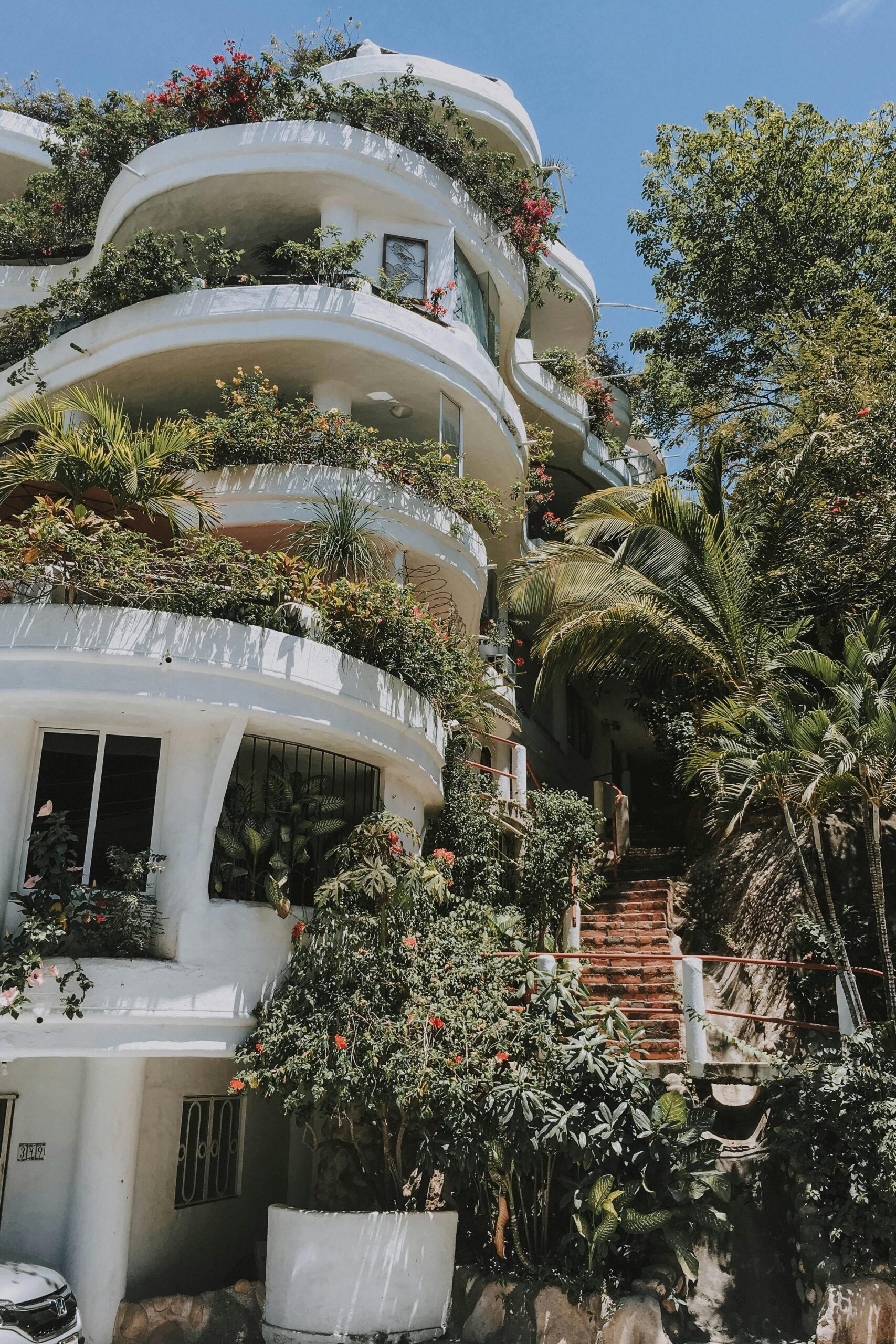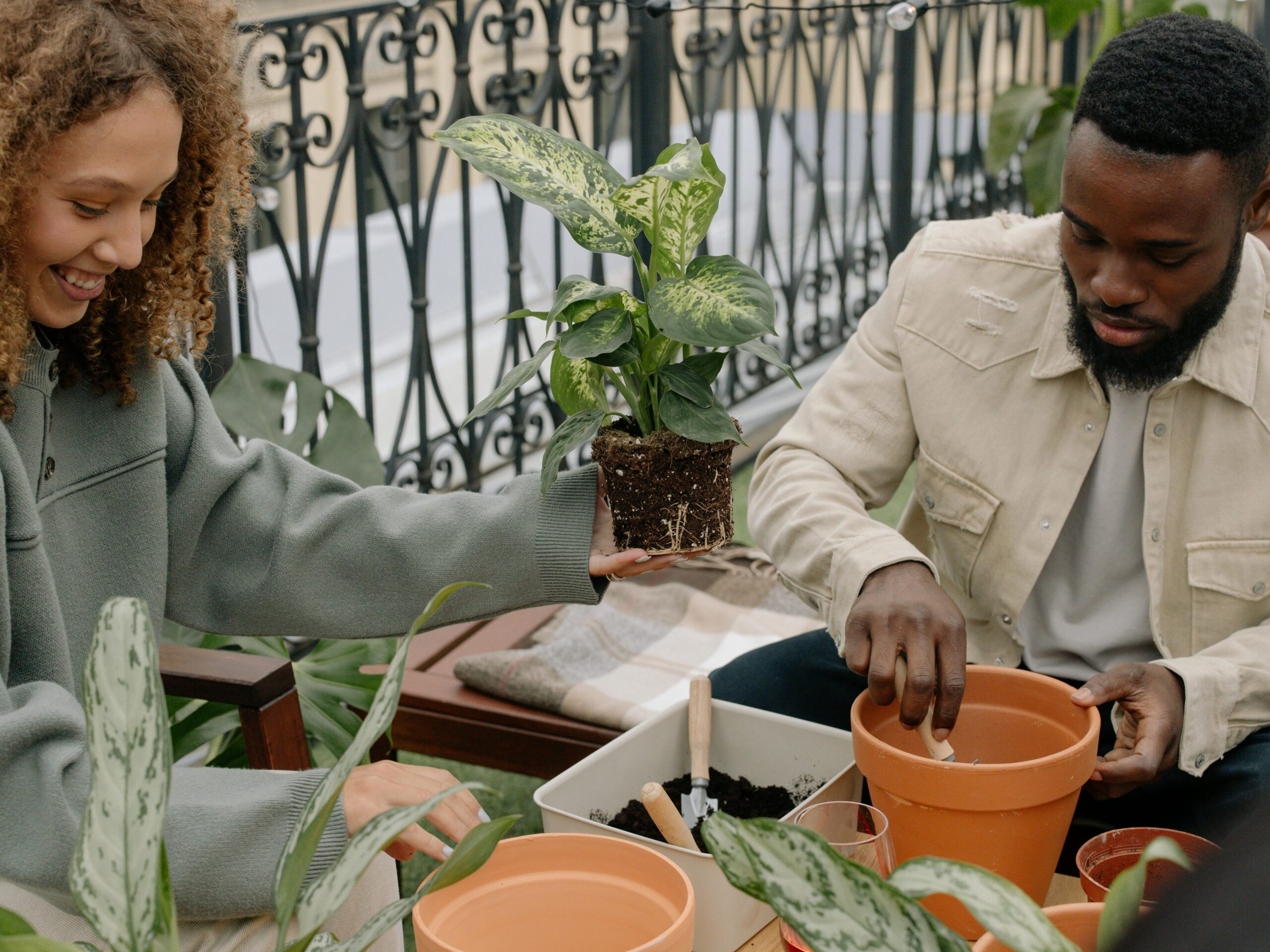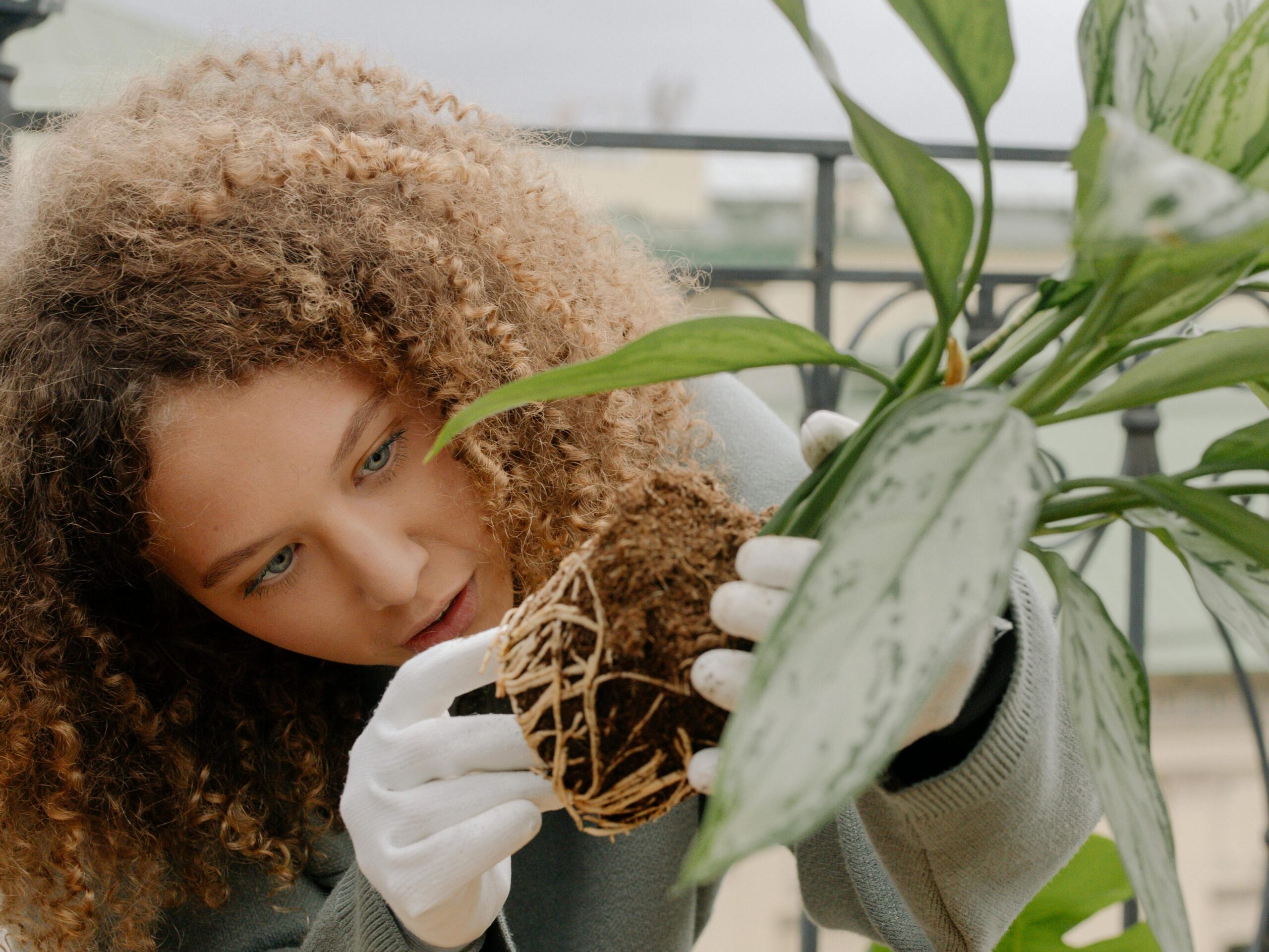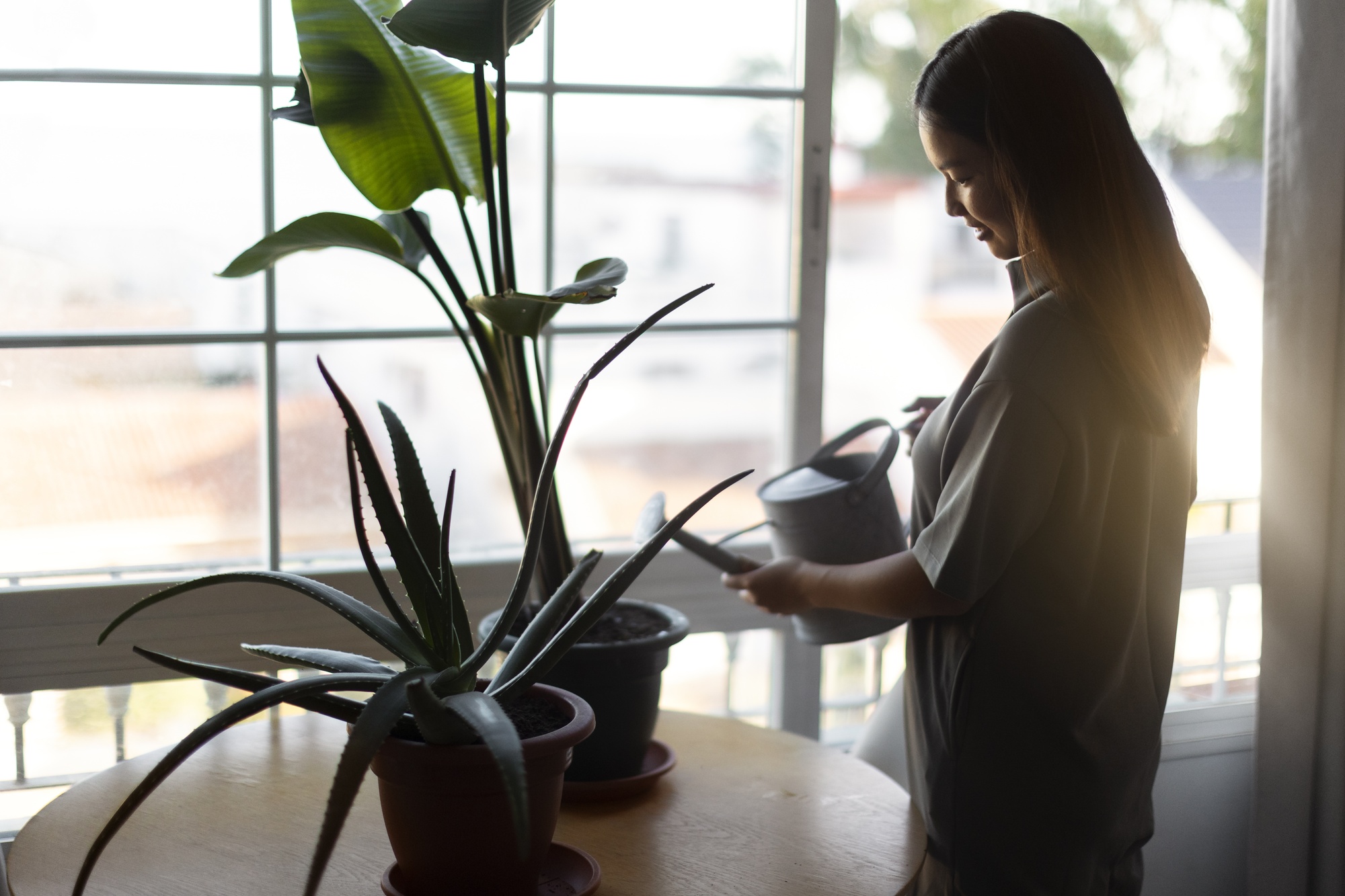When my father retired, I wanted a hobby we could share, something to slow down time between work calls and weekend errands. We started with a single pot of mint on the balcony, unsure if we’d even get a single leaf, that eventually turned into an urban garden. In this blog, I cover all apartment gardening essentials, plus a FREE Plant Guide at the end to save you hours of research.

Why Your Apartment Needs A Garden
Apartment gardening, a dynamic facet of urban gardening, that turns cramped city living into green spaces has become the need of the hour.
The Urban Statistics That Demands Apartment Gardening As An Urgent Action
According to the United Nations, 55% of the global population lived in urban areas in 2018, and this figure is projected to rise to 68% by 2050.
In cities, like Mumbai, New York, or Lagos, apartments dominate housing landscapes. However, according to World Bank, 2020 fewer than 30% of urban households have access to private green spaces.
Simultaneously, the World Health Organization reports that 99% of the world’s urban population breathes air exceeding pollution safety limits, with smog and indoor toxins linked to 7 million premature deaths annually.
This paints a stark picture of:
- Space scarcity: Cities prioritize buildings over green spaces. Tiny apartments mean no yards, rooftop access, or even sunlight for plants. Without greenery, urban life feels disconnected from the natural world.
- Environmental degradation: Rapid urbanization in developing nations (e.g., India, Nigeria) and industrialized regions (e.g., China, the U.S.) has prioritized concrete over greenery, worsening air quality.
- Health risks: Indoor air is often 2–5x more polluted than outdoor air. Apartments trap pollutants from traffic, industrial emissions, and household chemicals, creating “indoor deserts” devoid of clean air.
- Food security crisis: Over 23 million Americans lack easy access to fresh produce (USDA). In cities, supermarkets are often far, expensive, or stocked with plastic-wrapped greens that spoil quickly.
This isn’t just about missing nature anymore, but a health crisis. Apartment gardening offers a practical solution to tackle the issues of food security and global warming, simultaneously—it’s green living in action.

How To Start Apartment Gardening
1. Assessing Space & Light Conditions In Your Apartment
Every apartment has unique growing conditions. Identify areas with natural light:
- South-facing windows offer the brightest light for sun-loving herbs like basil or rosemary.
- Whereas north-facing spaces suit low-light plants like pothos or snake plants.
Measure how many hours of direct or indirect light your space receives daily to determine what you can grow. If there are no well-lit spots, consider compact grow lights for leafy greens or herbs.
2. Choose Beginner-Friendly Plants
Start with hardy, low-maintenance varieties to build confidence. Herbs like mint, thyme, and parsley can tolerate “the occasional neglect”, and the leafy greens such as spinach, kale, or lettuce grow quickly in shallow containers.
For decorative options, succulents, spider plants, or peace lilies adapt well to indoor conditions. Avoid fussy plants like orchids or fiddle-leaf figs until you’re comfortable with daily care.
3. Select The Right Containers
Drainage is the most important factor that most miss. Pots with holes at the bottom prevent root rot. You can repurpose mason jars, tin cans, or wooden crates by drilling drainage holes yourself.
For small spaces, opt for vertical solutions, as mentioned earlier. Ensure container size matches the plant’s mature roots’ length; shallow pots for herbs, deeper ones for tomatoes or dwarf citrus trees.
4. Choice Of Correct Soil Mix And Fertilizer
Garden soil is too dense for containers. Choose a lightweight potting mix blended for indoor plants, which ensures proper aeration and moisture retention. Enrich soil with organic compost or other organic slow-release fertilizer options like biochar to nourish plants over time. Over-fertilization can alter salt concentration in soil and lead to plant death.



Complete Care Guide For Apartment Gardening
Watering: Less Is Often More
Over-watering is the top cause of plant death. Let the top inch of soil dry out before watering again. Use room-temperature water to avoid shocking roots. Self-watering pots or moisture meters help busy gardeners maintain balance. Plants like succulents prefer infrequent watering, while tropical ferns need consistently damp soil.
Light Management
Even low-light plants need some indirect sunlight. Rotate pots weekly to prevent lopsided growth. If natural light is scarce, supplement with full-spectrum LED grow lights placed 6–12 inches above plants for 12–14 hours daily. Avoid placing heat-sensitive plants near radiators or AC vents.
Feeding Your Plants
Indoor plants deplete soil nutrients over time. Use organic liquid fertilizers (e.g., seaweed or fish emulsion) every 4–6 weeks during active growth. For edible plants, opt for vegetable-specific fertilizers to ensure safe, flavorful harvests. Reduce feeding in fall and winter when growth slows.
Pruning And Pest Control
Regular pruning keeps plants compact and healthy. Pinch off herb tips to encourage bushiness and remove yellowing leaves. Inspect plants weekly for pests like aphids or spider mites. Wipe leaves with diluted neem oil or insecticidal soap (a natural, non-toxic remedy) to deter infestations.
Seasonal Adjustments
Plants respond to seasonal light and temperature shifts. In winter, reduce watering and move sensitive plants away from cold drafts. During summer, shield leaves from harsh midday sun with sheer curtains. Repot root-bound plants in spring to give them space to thrive.
Best Plant Varieties For Apartment Gardening
I have created a free plant-care guide for all the apartment dwellers that includes tips and tricks tailored to your skill level and apartment conditions.
Beginner-Friendly
Ideal for those new to gardening or with limited time. These plants tolerate ‘lousy-forgetfulness’ and adapt to varying conditions.
| Plant Name | Type | Light Needs | Key Tips |
| Snake Plant | Air-purifying | 2–8 hours of indirect light | Water every 3–4 weeks; thrives in neglect. |
| Pothos | Trailing vine | 2–6 hours of indirect light | Tolerates irregular watering; fast-growing. |
| Spider Plant | Air-purifying | 4–6 hours of indirect light | Prefers slightly crowded pots; easy to propagate. |
| Mint | Herb | 4–6+ hours of indirect/direct light | Trim regularly; grows aggressively in containers. |
| ZZ Plant | Decorative | 2–6 hours of indirect light | Drought-tolerant; water monthly. |
| Succulents | Desert plants | 6+ hours of direct sunlight | Use gritty soil; avoid over-watering. |
High Reward Plants
While these varieties demand more attention, they transform apartments into show-stopping green havens, like the ones you see on Pinterest.
| Plant Name | Type | Light Needs | Key Tips |
| Orchids | Flowering | 6+ hours of filtered light | Requires 60–80% humidity; water with lukewarm water weekly. |
| Fiddle Leaf Fig | Tree | 6+ hours of indirect light | Rotate weekly; sensitive to temperature shifts. |
| Bonsai Tree | Miniature tree | 6+ hours of direct sunlight | Daily pruning; specialized soil mix (akadama, pumice/lava rock, and organic matter, e.g., pine bark). |
| Calathea | Foliage | 2–6 hours of indirect light | Needs distilled water; high humidity. |
| Citrus Trees (Dwarf) | Fruit-bearing | 6+ hours of direct sunlight | Hand-pollinate flowers; fertilize monthly. |
| Venus Flytrap | Carnivorous | 6+ hours of direct sunlight | Distilled water only; no fertilizer. |
Shade-Tolerant Plant Varieties For North Facing Apartments
These plants thrive in low-light conditions with minimal direct sunlight.
| Plant Name | Type | Light Needs | Key Tips |
| Peace Lily | Air-purifying | 2–6 hours of indirect light | Water when leaves droop; tolerates shade. |
| Boston Fern | Fern | 2–6 hours of indirect light | Mist daily; keep soil evenly moist. |
| Cast Iron Plant | Foliage | 2–4 hours of indirect light | Nearly indestructible; slow-growing. |
| Philodendron | Trailing vine | 2–6 hours of indirect light | Prune to control growth; tolerates dry air. |
| Parlor Palm | Palm | 2–6 hours of indirect light | Slow-growing; prefers humidity. |
| Begonia (Rex) | Decorative foliage | 2–6 hours of indirect light | Avoid wet leaves; prefers stable temps. |

Most Important Consideration
Not every plant will thrive, and that’s okay. Gardening is a journey of learning your space’s quirks and your plants’ needs. Start with one resilient plant, observe its behavior, and expand your green corner as your confidence grows.

